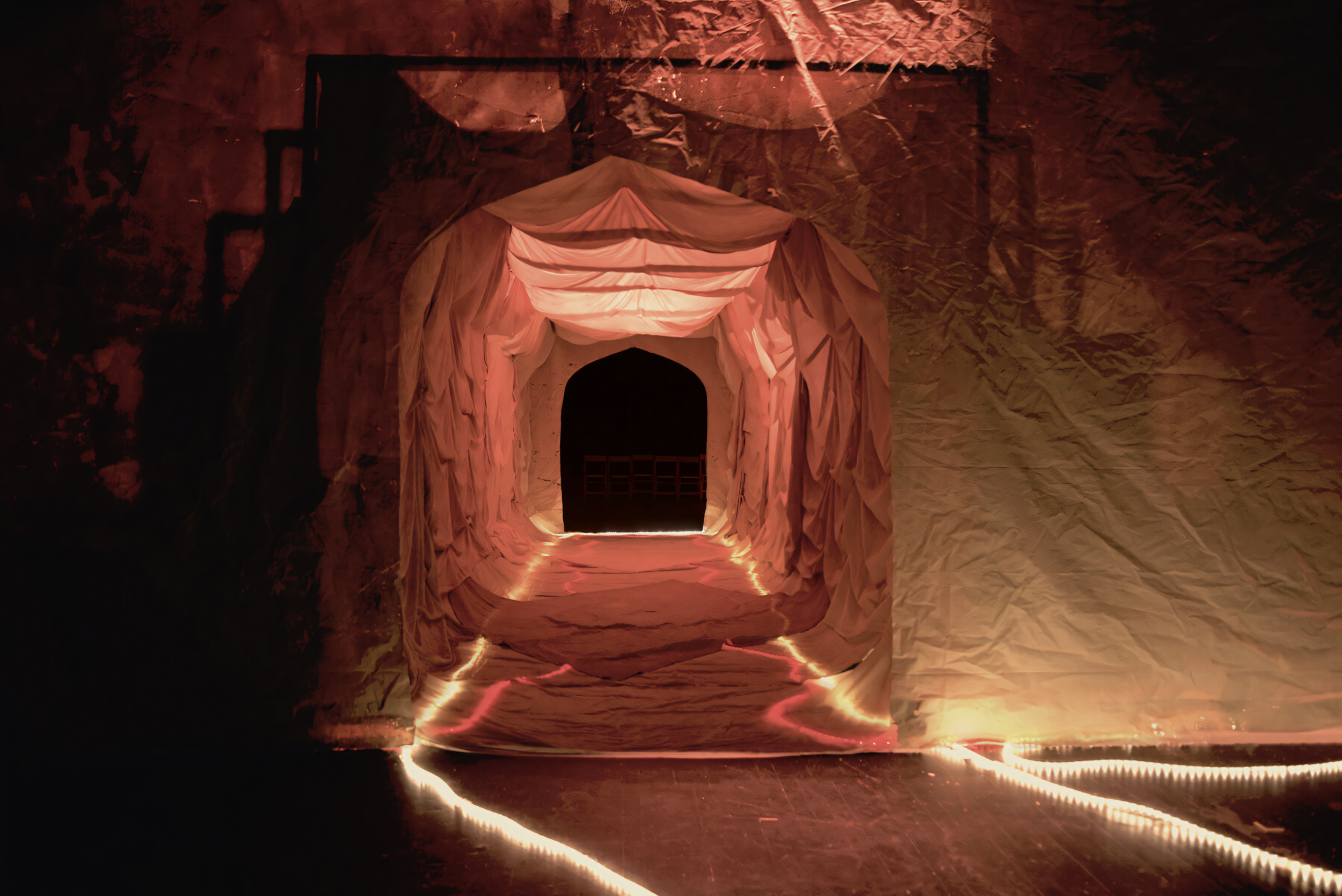
THE POLYRHYTHMS OF THE EAR CANAL I:
INSTALLATION
From otoacoustic emissions to tinnitus frequencies, our ears act as instruments responding to sound information. To distinguish acoustic elements generated outside of the ear from those taking shape in the inner ear, we are required to perceive all acoustic information internally. But is concentration enough to determine the origin of each sonic element? This sonic distraction accentuates the focus of my work: the dichotomy between the theory of hearing as passive reception and listening as active concentration.
For my undergraduate thesis, I produced a large-scale installation to accentuate the bodily impact of sonic vibration. Entirely self-designed and constructed, the 24-foot-long ear canal featured a six-channel speaker array that emitted an aural architecture of head-borne tones. By featuring sound localization techniques and the surrounding architecture, my audience could form their own unique and dynamic music, contingent upon their placement in the installation.
Interleaved multichannel installation, 8-speaker array routed in Max/MSP. Filmed by Emmet Dotan. Edited by Peter Haffenreffer. All photographs by Izzy Leung.
The parallel division of the space allowed each architectural space to become a speaker that produced overlapping sounds that swept between the two, intricately joining them to be heard and felt in a rhythmic resonance throughout the body. On one side, tinnitus tones of varied frequencies merged to form their own highly pitched and dynamic music.





